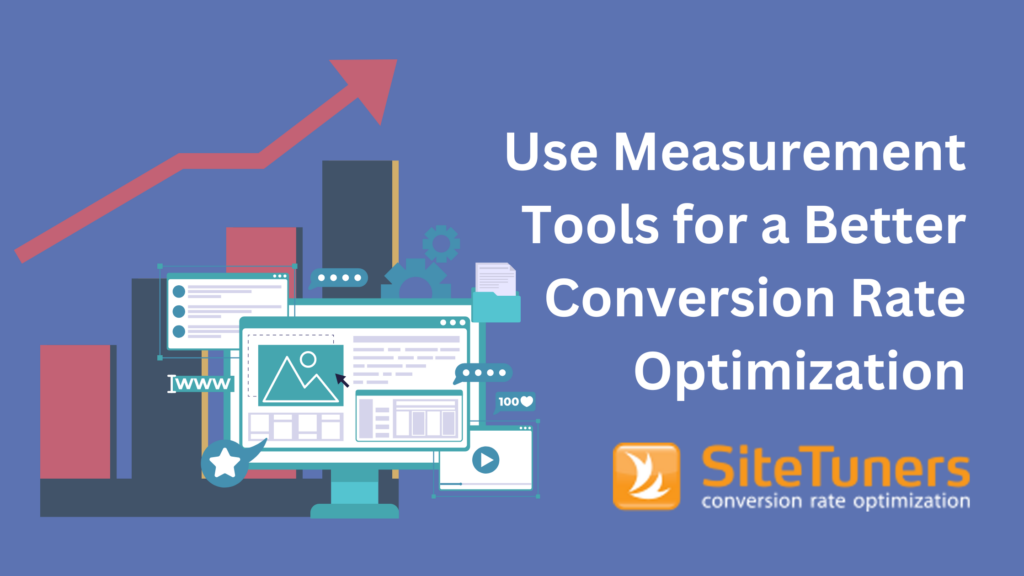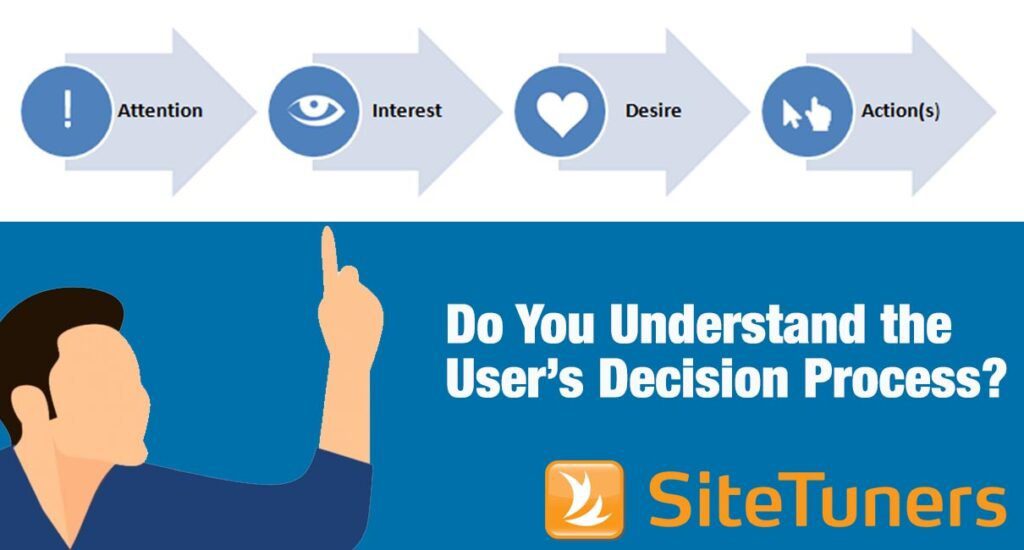Summary: Are you trying to improve your business’s online performance and boost conversion rates? In the highly competitive digital landscape, it’s crucial to employ strategies that persuade visitors to take the desired actions on your website. That’s where the art of persuasion comes in.
Fortunately, you don’t have to go it alone. Sitetuners, a conversion rate optimization agency leader in the industry, has compiled a comprehensive guide on using persuasive techniques and how to improve conversion rates.
By using proven tactics and strategies, you can influence user behavior and decision-making, resulting in more conversions, higher revenue, and greater success for your business. Learn More:
1. The Importance of Persuasion in Conversion Rate Optimization (CRO)
Persuasion is a powerful tool in digital marketing and CRO. Using various techniques, you can inspire your website visitors to take the actions you want, whether purchasing, signing up for a newsletter, or downloading a resource. These persuasive methods can help you create positive experiences, drive user behavior, and skyrocket your conversion rates. So, if you’re ready to take your business to the next level, start implementing these powerful techniques and watch your success soar!
2. Key Persuasive Techniques to Boost Conversion Rates
Drawing on insights from SiteTuners, let’s explore some proven persuasive techniques that can lead to increased conversion rates:
- Reciprocity
Have you ever felt obligated to return a favor when you receive something valuable or helpful? Offering users valuable content or resources, such as ebooks, whitepapers, or webinars, can create a sense of indebtedness, making them more likely to take the desired action on your website.
Strategies you can use:
- Offer free resources or tools that provide value to your target audience.
- Share helpful tips, guides, or industry insights through blog posts and newsletters.
- Provide free trials or samples of your product or service.
- Commitment and Consistency
Once your visitors make a small commitment, they are more likely to stay consistent with their actions and follow through on more significant commitments. Encourage them to make smaller commitments, such as signing up for a newsletter or creating an account, before presenting them with more significant conversion goals.
Strategies you can use:
- Implement a multi-step conversion process, starting with smaller commitments and gradually increasing the level of commitment.
- Highlight the benefits of staying consistent with user actions, such as exclusive offers, discounts, or loyalty rewards.
- Use social proof to demonstrate how others have benefited from their commitments, e.g., testimonials, case studies, or success stories.
Social Proof
We all tend to follow the actions of others, especially when we are uncertain about what to do. By showcasing social proof, such as customer testimonials, reviews, or endorsements, you can build trust and credibility with your audience, leading to higher conversion rates.
Strategies you can use:
- Display customer reviews, ratings, or testimonials prominently on your website.
- Showcase industry awards, certifications, or recognitions to demonstrate your expertise and credibility.
- Use case studies or success stories to illustrate the results and benefits of using your product or service.
Authority
Users are more likely to trust and follow the advice of experts or authoritative figures. Establishing your brand as an industry leader or authority can influence visitor behavior and boost conversion rates.
Strategies you can use:
- Publish high-quality, informative content that showcases your industry knowledge and expertise.
- Partner with industry influencers or experts to create content, endorsements, or collaborations.
- Highlight your company’s achievements, years of experience, or unique selling points to demonstrate your authority in the field.
Scarcity and Urgency
Scarcity and urgency are powerful motivators that drive visitors to take immediate action. Limited availability or time-sensitive offers create a fear of losing out (FOMO), prompting them to convert quickly.
Strategies you can use:
- Offer limited-time promotions or discounts to encourage fast decision-making.
- Use countdown timers or banners to emphasize the urgency of an offer or deadline.
- Display low stock alerts or limited availability messages to create a sense of scarcity.
Liking
Visitors are more likely to engage with and trust brands they like or relate to personally. Creating a likable brand image and building solid connections with your audience can increase the chances of conversion.
Strategies you can use:
- Develop a unique and memorable brand identity that resonates with your target audience.
- Engage with users through social media, email campaigns, or chatbots to create personal connections.
- Share stories, values, and behind-the-scenes content that humanizes your brand and fosters a sense of relatability.
Contrast Principle
The contrast principle says that people perceive differences more prominently when two options are presented simultaneously. Show your product or service alongside less appealing alternatives. You can make your offer stand out and appear more valuable.
Strategies you can use:
- Compare your product or service with competitors, highlighting the unique benefits and features.
- Offer multiple pricing tiers, each providing additional value, making the higher-priced options seem more appealing.
- Use visuals or infographics to demonstrate the advantages of your offering compared to other solutions.

Improve your CRO using measurement tools
3. Implementing Persuasive Techniques on Your Website
Now that you understand the critical persuasive techniques let’s explore how to incorporate them into your website effectively:
- Optimize Website Design and Layout
Your website’s design and layout are crucial for user experience and conversion. Ensure your site is visually appealing, easy to navigate, and strategically highlights persuasive elements.
Some tips:
- Use a clean, responsive design that adapts to different devices and screen sizes.
- Organize your content logically, making it easy for users to find the necessary information.
- Place persuasive elements, such as social proof, calls to action (CTAs), or limited-time offers, in prominent positions on your site.
- Create Compelling Calls to Action (CTAs)
CTAs are essential for guiding visitors toward desired actions and increasing conversion rates. Design CTAs that communicate the value or benefits of taking action.
Some tips:
- Use action-oriented language that encourages visitors to take the desired action (e.g., “Download Now,” “Sign Up,” or “Get Started”).
- Make your CTAs visually prominent using contrasting colors, bold fonts, or eye-catching designs.
- Test different CTA placements, sizes, and messaging to determine what resonates best with your audience.
Develop Persuasive Content
Content is a vital component of your website and plays a significant role in persuading users to convert. Create engaging, informative content that aligns with the persuasive techniques discussed earlier.
Some tips:
- Use persuasive copywriting techniques to create compelling headlines, product descriptions, and marketing messages.
- Address your audience’s pain points, needs, or desires, and demonstrate how your product or service provides a solution.
- Incorporate storytelling, emotion, or humor to connect with your audience deeply.
Test and Optimize
Testing and optimizing your website continuously is essential. Use data-driven insights to make informed decisions and fine-tune your persuasive strategies.
Some tips:
- Implement A/B testing to compare website elements, such as headlines, CTAs, or layouts, and determine which version performs better.
- Use web analytics tools to track user behavior, conversion rates, and other relevant metrics.
- Gather visitors’ feedback through surveys, interviews, or usability testing to gain insights into their preferences, pain points, and overall experience.
Personalize User Experiences
Personalization is a solid persuasive technique that tailors your website’s content and messaging to individual visitors. Delivering personalized experiences can create a deeper connection with your audience, increase engagement, and boost conversion rates.
Some tips:
- Use data and analytics to segment your audience based on demographics, behaviors, or preferences.
- Implement dynamic content that changes based on visitor attributes, such as location, browsing history, or previous interactions.
- Leverage marketing automation tools to send personalized emails, recommendations, or retargeting campaigns.

Improve your visitors’ online user experience
Keep your website up to speed in today’s highly competitive digital landscape. By harnessing the power of persuasion, you can create a website that captivates your audience and drives them to act. Understanding the persuasion techniques we have explored can get you great results. However, by working hand in hand with subject matter experts, you can unleash the potential of your website. Contact us and talk to one of our CRO experts, learn about our conversion rate optimization services, how to increase e-commerce sales, and how to take your business to the next level. What are you waiting for?


